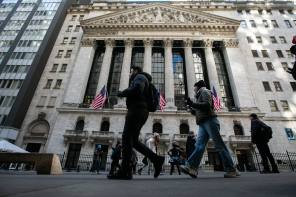

Emerging markets appear to be experiencing a resurgence in popularity among retail investors. Figures from the Investment Association show net retail inflows into the IA Global Emerging Markets sector in eight of the 12 months to the end of January 2017.
Interest increased in the second half of 2016 following the UK’s vote to leave the EU. This included a high of £223m of inflows in October, but the election of Donald Trump as US president and concerns over the effect of a more protectionist approach from him led to a fall in interest in December, with outflows of £5m.
But market performance has generally supported an increased focus on emerging markets. The MSCI Emerging Markets index has lagged its peers for the five years to March 7 2017; its gain of 31.5 per cent, in sterling terms, is dwarfed by the 143 per cent rise in the S&P 500 index over the period. But in the past 12 months performance has improved significantly, with the 40.4 per cent increase in sterling terms outperforming the S&P 500, MSCI World and FTSE All Share indices, data from FE shows.
Maarten-Jan Bakkum, senior strategist in emerging markets at NN Investment Partners, says accelerated growth in the US and Europe has helped the emerging world as exports have improved in all the major emerging markets. “This is the main reason why the growth momentum in the emerging economies has quickly reached its highest level in five years,” he says.
But he suggests the recent recovery in growth is “fragile”, because it is so dependent on improved exports and higher commodity prices. “For the time being, domestic consumption and investments seem unable to take over as a growth engine. The main reasons are the weak fiscal positions in most countries and the excessive credit growth over the past 10 years. This makes the emerging world vulnerable in a scenario where global trade growth slows again,” warns Mr Bakkum.
The Organisation for Economic Co-operation and Development agreed with this in its latest Interim Economic Outlook. “The rapid growth of private sector credit and the relatively high level of indebtedness is a key risk in a number of emerging markets, above all in China,” it said.
However, Luca Paolini, chief strategist at Pictet Asset Management, suggests a pick-up in exports among developing economies tends to be associated with a positive shift in emerging market companies’ earnings prospects.
“In nominal terms, exports from emerging market economies have improved steadily over the course of the year and are now growing compared with the declines of a year ago. This suggests emerging market companies should be able to deliver the forecast 15 per cent rise in profits in the next 12 months, their best showing since 2011.”
Jan Dehn, head of research at Ashmore Group, adds: “Emerging market fundamentals proved their resilience to shocks over the past few years, when commodity prices declined and investors sought more exposure in US markets. But a combination of prudent policies and commitment to reform over this period is now once again propelling emerging market economies forward.”



